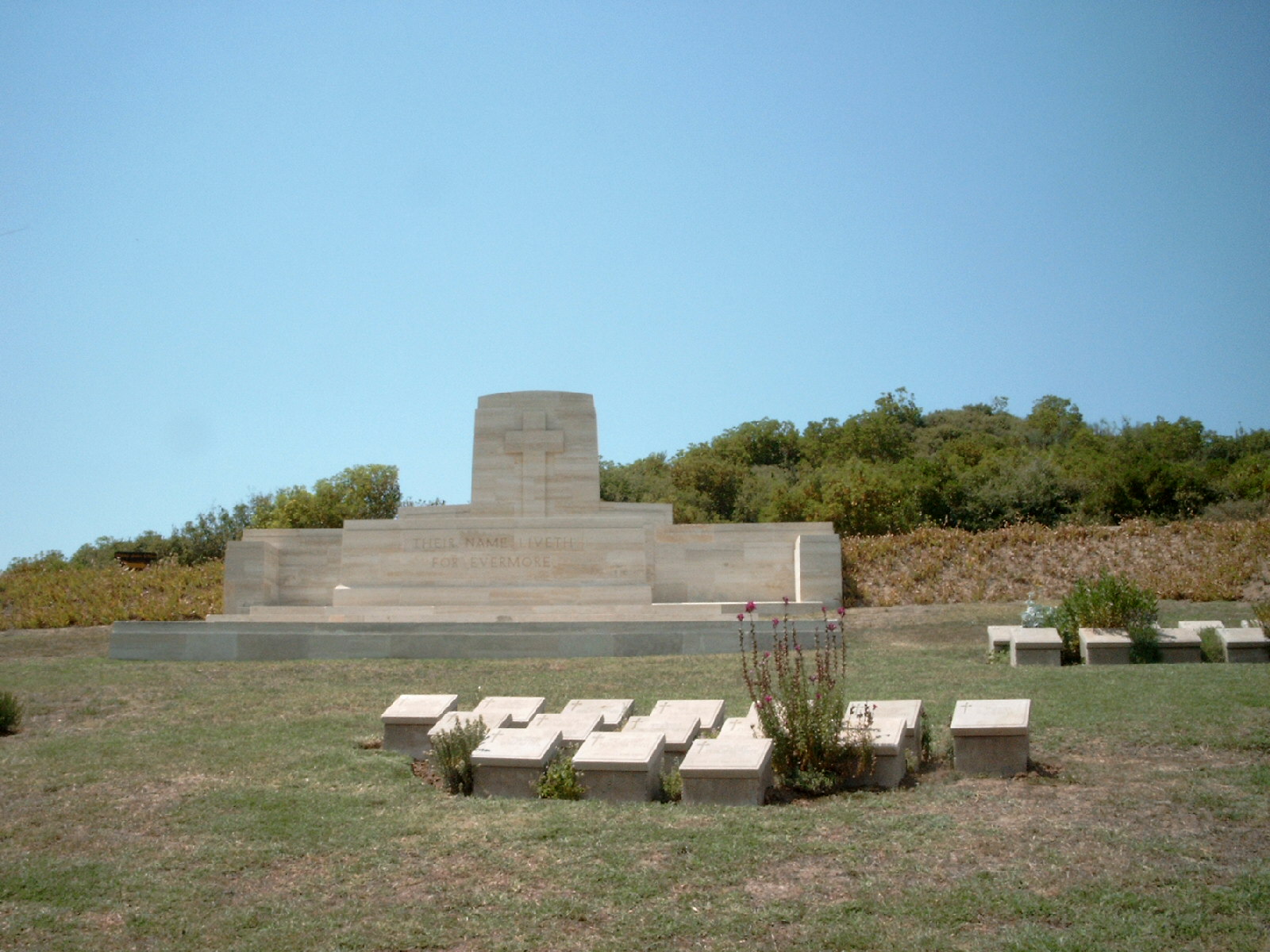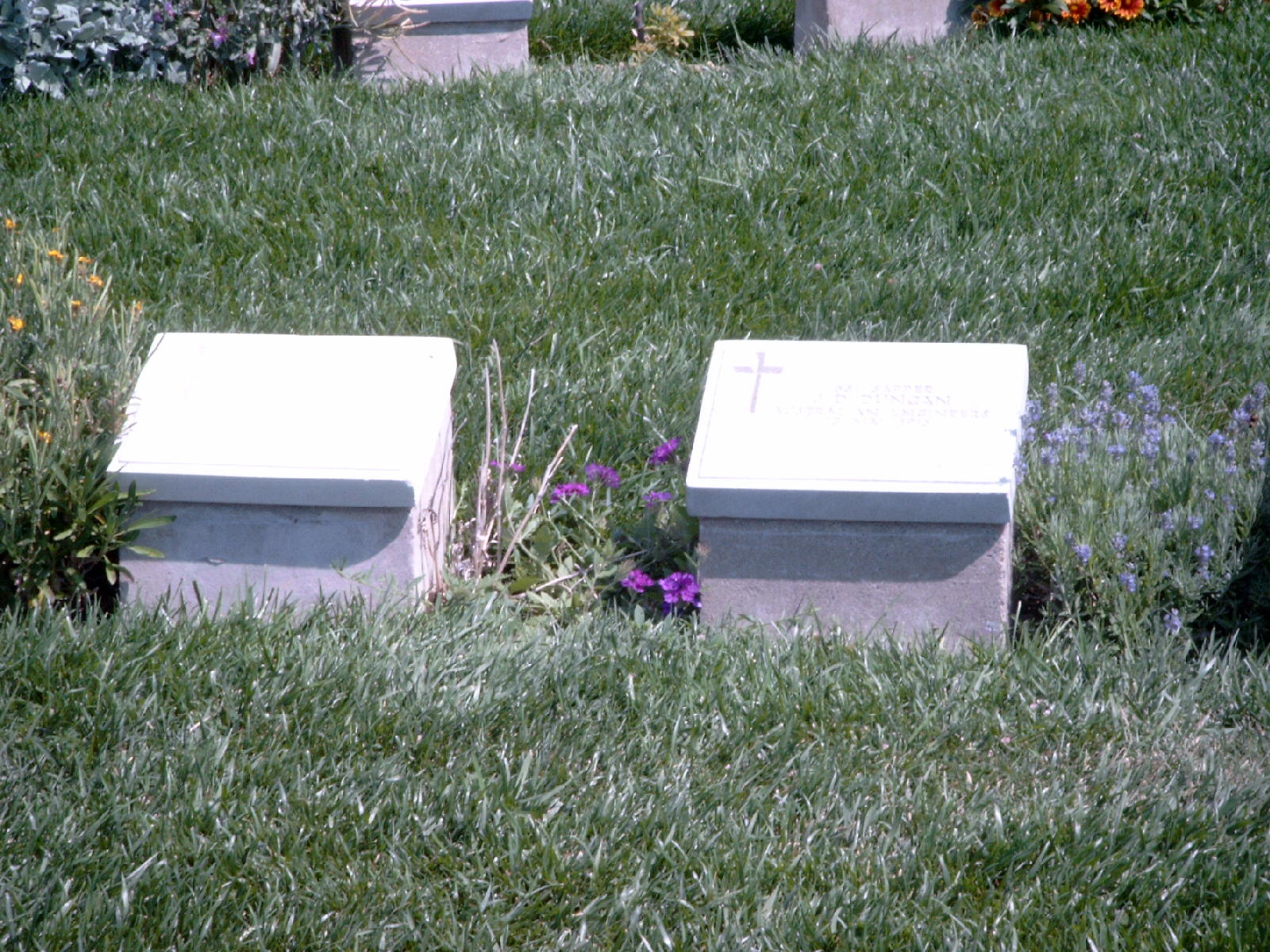This report about my visit to the central part of the Gallipoli Peninsula
is divided into five sections
Section 1
Brighton Beach and Anzac Cove
Brighton Beach.
As you can see, the beach is relatively flat.
This beach is suitable for a military landing.
Commonwealth War Graves Commission:
Shrapnel Valley Cemetery & Plugges Plateau Cemetery.
Shrapnel Valley Cemetery
The text on this tombstone reads:
593 TROOPER
J. C. SAMS
2ND AUST. LIGHTHORSE
13/14 MAY 1915
593 TROOPER
J. C. SAMS
2ND AUST. LIGHTHORSE
13/14 MAY 1915
The text on this tombstone reads:
645 TROOPER
R. M. UNDERHILL
2ND AUST. LIGHTHORSE
14 MAY 1915 AGE 23
***
GREATER LOVE
HATH NO MAN THAN THIS
The text on this tombstone reads:
12785 LANCE CPL
D. ROGERS
ROYAL WELCH FUSILIERS
7 AUGUST 1915 AGE 24
***
TO MEMORY EVER DEAR
The inscription below the cross reads:
THEIR NAMES LIVETH
FOR EVERMORE
A plaque with information about the Gallipoli campaign of 1915 and about the cemetery
(English text).
(English text).
A map of Gallipoli Peninsula
A plaque with information about the military campaign in Shrapnel Valley (English text).
This monument is located at Hell Spit Point (or Queensland Point) that separates Brighton Beach from Anzac Cove. The text is about the Ottoman soldiers who resisted ANZAC during the invasion of 25 April 1915. The text is in Turkish, but an English translation is placed at the foot of the monolith (see the next picture).
An English translation of the Turkish text on the large monolith
shown in the previous picture.
Looking west towards the sea from Anzac Cove.
Anzac Cove
Anzac Cove is a modern name that was given to this location after the campaign of 1915.
Looking north along the coast of the peninsula.
The road you can see in these pictures is a modern construction,
built to accommodate the numerous visitors to the area.
It was not there during the military campaign of 1915.
built to accommodate the numerous visitors to the area.
It was not there during the military campaign of 1915.
Anzac Cove.
As you can see, there are steep cliffs and deep ravines.
This beach is not suitable for a military landing.
Looking down at the narrow beach at Anzac Cove.
This rock formation is known as the Sphinx. Before landing at Gallipoli Peninsula, the ANZAC soldiers had been in training camp outside the Egyptian capital Cairo where they had seen the pyramids and the sphinx. Therefore they gave this name to the large rock formation.
The Anzac Commemorative Site.
The beach below the commemorative site.
In the background: the Sphinx.
Commonwealth War Graves Commission:
Ari Burnu Cemetery to the left,
ANZAC Commemorative Site to the right.
Ari Burnu Cemetery.
Two tombstones.
This monument is located south of Ari Burnu Cemetery. It is a famous text, written by Mustafa Kemal Atatürk in 1934. The text is in English, because it is addressed to foreign visitors, but a Turkish translation is placed at the foot of the monolith.


The text reads as follows:
"Those heroes that shed their blood // and lost their lives... // You are now lying in the soil of a friendly country. // Therefore rest in peace. // There is no difference between the Johnnies // and the Mehmets to us where they lie side by side // here in this country of ours... // You, the mothers, who sent [your] sons from faraway countries, // wipe away your tears. // Your sons are now lying in our bosom // and are in peace. // After having lost their lives on this land they have // become our sons as well. // Atatürk 1934."
The dots do not mark an omission. They are part of the original text. They mark a moment of hesitation and reflection or a short pause.
In the top left corner of the monument: A portrait of Mustafa Kemal Atatürk (1881-1938), founder of the Republic of Turkey in 1923; president of Turkey 1923-1938.
Anzac Cove (Turkish text).
Looking south along the coast of the peninsula.
Ari Burnu Cemetery
The Gallipoli Peninsula is marked with a red square on this map.
A map of Gallipoli Peninsula.
The southern tip of the peninsula is known as Cape Helles.
A plaque with information about the military campaign at Ari Burnu (English text).
The monument erected to the memory of the Gallipoli campaign in 1915.
* * *
Go to the next installment:
* * *











































No comments:
Post a Comment